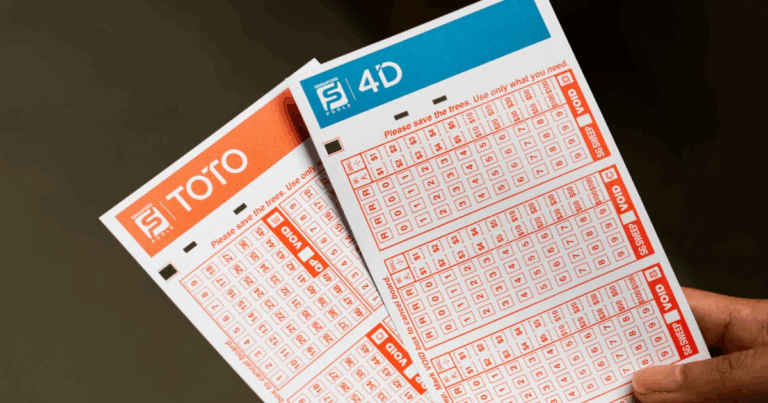Using Data and Stats to Improve Your TOTO Betting Strategy

When it comes to sports betting, especially TOTO, most people rely on gut feelings, team loyalty, or pure luck. But with the vast amounts of data available today, a more strategic and informed approach is not only possible—it’s increasingly necessary if you want to consistently improve your odds. Whether you’re a casual player or aiming to take your betting more seriously, using data and statistics can give you a measurable edge over the average punter.
How TOTO Betting Works
TOTO betting is a type of sports lottery where you predict the outcome of football (soccer) matches. Typically, bettors choose between a home win (1), draw (X), or away win (2) for a fixed number of games—often 13 or 14. The more matches you get right, the higher your payout, with jackpots awarded for getting all outcomes correct.
Unlike fixed-odds betting where each bet is treated individually, TOTO is a pool betting system. The prize pool is shared among winners, which means beating other bettors, not just the odds, is the name of the game.
Why Data Matters in TOTO
Every match has its own context—team form, injuries, historical matchups, venue, weather, and more. Tapping into this information allows you to go beyond the surface-level assumptions and uncover patterns and probabilities.
In TOTO, where one missed prediction can cost you the top prize, using data to minimize uncertainty becomes even more crucial.
Let’s look at how to harness this information to craft smarter betting strategies.
- Analyze Historical Results
Start by looking at the historical results of TOTO games and the teams involved. Historical data provides the foundation for pattern recognition.
Key Metrics to Track:
Win-draw-loss records (especially recent form, last 5–10 matches)
Head-to-head statistics
Home and away performance
Goal averages per game
For example, if a team has drawn 4 out of their last 6 matches, and their opponent has a similar pattern, the likelihood of a draw might be higher than average. Historical draw rates in specific leagues can also be revealing—for example, Ligue 1 in France often has a higher draw percentage than the Premier League.

- Understand and Use Probabilities
Data can be used to calculate implied probabilities. Sportsbooks often reflect probabilities in their odds, but you can derive your own based on team statistics.
How to Calculate:
Suppose Team A has won 6 of its last 10 games, drawn 2, and lost 2. That’s a 60% win rate.
But adjust that based on:
Strength of opposition in those matches
Injuries or lineup changes
Home vs. away context
Build a basic probability model using:
Team performance metrics
League averages
Prediction models like Poisson distribution (for goal prediction)
Even basic probability modeling can highlight games where the public perception may be skewed, giving you an edge.
- Avoid Common Biases
Bettors often fall into psychological traps. Data helps you stay objective.
Common Biases Include:
Recency bias: Overvaluing the last match result
Confirmation bias: Picking based on your preferences and ignoring data that contradicts it
Favorite-longshot bias: Overestimating underdogs and undervaluing favorites
Using stats allows you to cut through these emotional pitfalls. If the numbers say a team with a recent high-profile win is still statistically weak, trust the data.
- Leverage Machine Learning and Predictive Models
If you’re tech-savvy or willing to explore tools, machine learning models can take your betting to the next level.
Example Approaches:
Logistic regression to predict match outcomes based on historical inputs
Random forest classifiers for decision-tree-based predictions
Poisson regression to estimate probable scores (useful for over/under predictions too)
You don’t need to build your own model from scratch—many online platforms and communities share open-source football prediction models that you can use or tweak.
- Use Betting Market Insights
The betting market itself is a data source. Monitor:
Line movements (when odds shift drastically)
Betting volume (how much money is being wagered)
Sharp movements may indicate insider knowledge (like an unannounced injury). You can also use aggregated market data to find “value bets”—outcomes where your model suggests a higher chance than the odds imply.
Tip: Compare odds across platforms. The variance can reveal market inefficiencies.
- Focus on Specific Leagues
TOTO includes a wide mix of leagues. Instead of spreading your analysis thin, specialize.
Choose a league or two and dive deep:
Know the team dynamics
Understand local playing styles
Track injuries and lineup news via local sources
This gives you a better chance of spotting patterns the average bettor might miss.
- Simulate Outcomes
Once you’ve collected your data and set probabilities for each game, run simulations.
For example:
Simulate 10,000 outcomes of a TOTO card using your estimated probabilities
Track how often certain combinations hit
Find combinations that maximize expected return versus popular picks
This can help in deciding which combos to include in your ticket. Remember, in a pool system, uniqueness helps—winning alone pays more than sharing.

- Track and Improve Your Strategy
Every good data-driven system includes feedback loops.
Keep a Betting Journal:
Record every ticket you submit
Note your reasoning and the data used
Track results and compare expected vs. actual outcomes
Over time, you’ll spot patterns—both in your strengths and your blind spots. You can refine your data models, avoid repeating mistakes, and improve your ROI (return on investment).
- Combine Quantitative and Qualitative Data
Not all useful data is numeric. Don’t ignore qualitative insights like:
Manager comments in press conferences
Team morale
Player behavior on and off the field
These can be particularly helpful in spotting upset potential or underdog value, especially when the stats are evenly matched.
Combining both data types gives you a fuller picture and can be the difference between a narrow miss and a jackpot hit.
- Practice Responsible Bankroll Management
No amount of data can guarantee a win. Always:
Set a fixed betting budget
Use consistent staking (e.g., % of bankroll)
Avoid chasing losses
Statistical betting is about long-term edge, not overnight success. Even the best models only improve odds—they don’t remove randomness.
TOTO betting is a game of probabilities, not certainties. Luck will always play a part, but leaning on data and stats gives you a real advantage. Instead of hoping to get lucky, you’re actively positioning yourself for success by using logic, probability, and pattern recognition.
By collecting data, analyzing trends, and simulating outcomes, you move from blind guessing to informed decision-making. With practice and discipline, this approach can significantly improve your performance—and make your TOTO experience much more rewarding.




